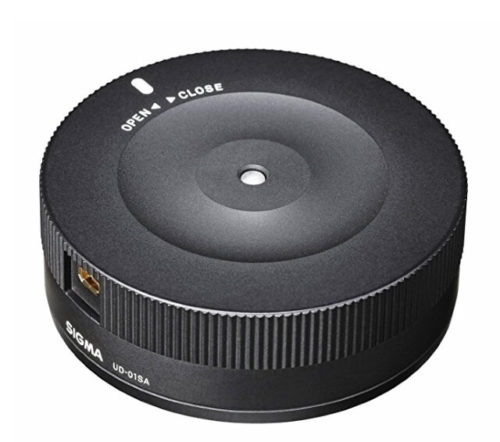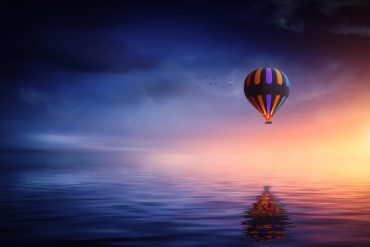In this article, we will list our recommendations of the best Nikon camera for beginners, but first, we will discuss some related subjects, like things to look for when choosing a camera for beginners and the four different types of digital cameras.
If you are a beginner photographer who wants to get a more advanced camera than your smartphone one and looking for the best beginner camera that gives you more control and let you grow with it as you advance, it’s worth considering the different options offered by Nikon.
Nikon produces a great range of entry-level cameras, from fully automatic cameras like the point-and-shot type to more advanced options such as DSLRs and mirrorless cameras.
Things to look for when choosing the proper camera for beginners
-
Ease of use
If you are just starting to learn photography then you need a camera that has as few settings as possible to allow you to practice photography easily. Having a camera with a lot of settings and functions can confuse beginners and prevent them from focusing on the fundamentals of photography.
-
Versatility
If you are a beginner that wants to develop your skills then a camera with some manual modes and perhaps an interchangeable lens option can help you improve your photography skill.
-
Consider future expanding
Some camera systems allow you to easily grow your camera kit, with an interchangeable lens camera you can try a variety of different types of photography simply by buying or renting a new lens to your camera gear.
All the above-mentioned factors can be gathered into choosing the camera type or the camera category that fit your level and skill in photography. So let us discuss the various camera types available in the market today.
Camera type
The important decision to make when choosing a new camera is its type. Choosing a camera type is about recognizing what you want to photograph and how you want to photograph it. The camera type defines its photography capability, features, and obviously its price range.
There are four main camera types:
-
Point-and-shoot cameras
Point-and-shoot cameras are designed for beginner photographers, they are easy to use because they feature many automatic modes (less camera setting required). Generally, it is a compact and convenient camera and needs little photography knowledge to use.
They are very similar to the camera found in your mobile phone, but with a larger sensor. You cannot change its lens because it is built into the camera body.
- Bridge cameras
Bridge cameras are cameras that fill the niche between relatively simple point-and-shoot cameras and interchangeable-lens cameras such as DSLRs and mirrorless cameras.
While bridge cameras also don’t offer interchangeable lenses, they allow you to have more control over camera settings than point-and-shoot cameras, and they have better ergonomics with larger grips.
Bridge cameras look and feel pretty similar to a DSLR but they have a fixed lens and usually a massive zoom range (they’re able to capture anything from a wide-angle landscape shot to a detailed shot of a bird in the distance)
-
DSLR cameras
DSLR (digital single-lens reflex camera) is a type of digital camera design that’s become synonymous with digital cameras for a very long time. The main difference between them and point and shot, and bridge cameras are allowing you to use different types of lenses on the same camera body (interchangeable lenses). This option makes it possible to pick up the right lens for shooting portrait, landscape, or macro photos with greater sharpness and image quality.
There are also a couple of extra advantages over the point and shoot, and bridge cameras, such as:
- Autofocus & autofocus tracking: DSLRs have better autofocus features compared to point-and-shoot cameras, allowing you to focus and shoot faster to capture more high-quality images.
- Low light: DSLR cameras are very effective for shooting in low-lighting situations, as the larger sensor can capture more light.
- Battery life: DSLRs don’t require the digital screen to be on all the time, so they use very little power, extending battery life.
- Lenses: DSLRs have been around far longer than mirrorless cameras, so they tend to give you more options in choosing lenses. DSLRs are also easier to buy used for this same reason.

-
Mirrorless cameras
Mirrorless systems are the future of digital cameras, packing the features of DSLRs into smaller bodies, and they offer a great compromise of quality and versatility.
In comparison to DSLR cameras, mirrorless cameras have the following advantages:
- They are more portable: They tend to be much smaller because they’re made without a mirror box and the prism needed for a DSLR.
- They have Live View: mirrorless cameras have an Electronic View Finder (EVF), what you see is what you get, unlike when using an optical viewfinder in DSLR cameras. For beginning photographers, the ability to see your exposure while composing your shot is a significant advantage of mirrorless cameras.
- Less moving parts: No flicking mirror means no camera shake, and they’re quieter than DSLR cameras,
- Better Video performance: mirrorless cameras have come out ahead in this respect. Most mirrorless cameras offer 4K, even on the lower end of the price scale.
Your decision should depend on your actual needs and how much you are interested in photography. For example, if you are a casual shooter, and you don’t have a big passion for photography and just need a compact camera for taking photos at some events, you have to consider a point-and-shot camera type.
On the other hand, if you intend to take photography seriously, you should consider an entry-level DSLR or mirrorless camera. These cameras offer excellent image quality at a reasonable price.
Best Nikon Camera for Beginners
The following list is our recommended Nikon cameras for each camera type:
- Point-and-shoot cameras
- Bridge cameras
- DSLR cameras
Nikon D3500 W/ AF-P DX NIKKOR 18-55mm f/3.5-5.6G VR
Nikon D750 FX-format Digital SLR Camera
- Mirrorless cameras
Nikon Z fc DX-Format Mirrorless Camera w/NIKKOR Z DX 16-50mm f/3.5-6.3 VR
- Point-and-shoot cameras
Nikon Coolpix A1000
The Coolpix A1000 will slide easily into a jacket pocket, yet you can unleash 35x optical zoom and it’ll record 4K video. The Coolpix A1000 is an enjoyable camera to shoot with and it boasts enough optical zoom to cover virtually any shooting scenario.
Its 35x optical zoom range is very impressive outside of larger bridge camera territory and gives a 35mm-equivalent focal range of 24-840mm, extendable to 1680mm with Nikon’s Dynamic Fine Zoom.
It has an average 1/2.3-inch-type compact camera sensor that produces moderate image quality. We’d only recommend the A1000 if you simply must have this much zoom range in your pocket.
Specification
| Sensor | 16MP 1/2.3-inch-type CMOS |
|---|---|
| Sensitivity range | ISO 100-6400 |
| Video | 4K at 30fps, 1080p Full HD at 60fps |
| Lens | 35x optical zoom, 24-840mm-equivalent, f/3.4-6.9 |
| Monitor | 3-inch, 1036k-dot LCD, tilting, touch-sensitive |
| Viewfinder | 0.2-inch, 1166k-dot electronic viewfinder |
| Battery life | 250 shots |
| Dimensions | 114.2 x 71.7 x 40.5mm |
| Weight | 330g |
Pros & Cons
| Pros | Cons |
|---|---|
| Optical zoom versatility | Moderate image quality |
| 4K video | Very small EVF |
| Ergonomic body and controls | High launch price |
| Fast, accurate autofocusing | Screen won't flip fully forward |
- Bridge cameras
Nikon Coolpix B600
The Nikon COOLPIX B600 is a ‘bridge’ super-zoom camera that has a 60x 24-1440mm zoom lens. It fills a niche for novice shooters who want stonking super-zoom capability combined with simple hassle-free operation and great connectivity at a reasonable price.
It is a fully automatic point-and-shoot operation, 1080p video, unremarkable continuous shooting, and the unequaled Snapbridge for seamless image transfer to your phone while you shoot.
The Nikon Coolpix B600 features a 16-megapixel back-side illuminated CMOS sensor and lens-shift Vibration Reduction. Both these help users achieve steadier, blur-free photography towards the telephoto end of the camera’s lens or in lower lighting conditions.
Specification
| Sensor | 1/2.3-inch CMOS |
|---|---|
| Sensitivity range | ISO125-1600 (extendable to 6400 in Auto mode) |
| Video | Full HD at up to 30fps |
| Lens | 24-1440mm equivalent in 35mm terms, 60x optical zoom |
| Monitor | 3-inch, 921K dot resolution |
| Viewfinder | No |
| Battery life | 280 shots or approx. 1 hour of 1080p video |
| Dimensions | 121.6x81.5x99.2mm |
| Weight | 500g including battery and SD card |
Pros & Cons
| PROS | CONS |
|---|---|
| Big zoom power. | Lens loses quality at extreme zoom. |
| Sharp rear display. | No manual exposure controls or Raw support. |
| Snappy autofocus. | No EVF. |
| SnapBridge wireless. |
- DSLR cameras
Nikon D3500 W/ AF-P DX NIKKOR 18-55mm f/3.5-5.6G VR
The Nikon D3500 was launched in 2018, and it is one of our recommended DSLRs for beginner photographers. Beginner cameras don’t have to be cutting-edge, they have to be straightforward, affordable, and just plain good.
It has a 24MP sensor at its heart and has all the manual controls that photography newbies will need and its image quality is really very good. The Nikon D3500 is compatible with a wide range of F-mount Nikon lenses from Nikon and third-party makers and has a good enough specification to please enthusiasts as well as beginners.
It also has an unusually good 5fps continuous shooting speed, whereas most rivals in this price bracket can only manage 3fps. Nikon does not use in-body stabilization in its DSLR cameras, but many Nikon lenses, including the AF-P 18-55mm lens bundled with this camera, come with Nikon’s VR (Vibration Reduction) system.
You don’t get 4K video capability with this camera, but it can shoot full HD 1920 x 1080 video at up to 60/50fps. You don’t get Wi-Fi, either, but built-in Bluetooth does let you transfer images to your smart device.
Specification
| Lens Mount | Nikon F |
|---|---|
| Sensor Resolution | Actual: 24.7 Megapixel |
| Effective: 24.2 Megapixel (6000 x 4000) | |
| Sensor Type | (APS-C) CMOS |
| Crop Factor | 1.5x |
| Image Stabilization | None |
| Capture Type | Stills & Video |
| Shutter Type | Electronic Shutter |
| Shutter Speed | 1/4000 to 30 Seconds |
| ISO Sensitivity | Photo/Video |
| 100 to 12,800 (Extended: 100 to 25,600) | |
| Continuous Shooting | Up to 5 fps at 24.2 MP |
| Recording Modes | 1920 x 1080p |
| Recording Limit | Up to 30 Minutes |
| Memory Card Slot | Single Slot: SD/SDHC/SDXC (UHS-I) |
| Wireless | Bluetooth |
| Monitor Size | 3.0" |
| Display Type | Fixed LCD |
| Focus Type | Auto and Manual Focus |
| Autofocus Points | Phase Detection: 11 |
| Dimensions (W x H x D) | 4.9 x 3.8 x 2.7" / 124 x 97 x 69.5 mm |
| Weight | 12.88 oz / 365 g |
Pros & Cons
| Pros | Cons |
|---|---|
| Value for money | Fixed rear screen |
| All-round image quality | No 4K video |
| Responsive autofocus | Relatively slow live view AF |
| 5fps continuous shooting |
Nikon D750 FX-format Digital SLR Camera
While the Nikon may now be relatively prehistoric in digital camera terms, it remains a very capable all-around DSLR option, especially for any advanced beginner who wants to make the upgrade from APS-C sensor DSLRs to full-frame photography for a reasonable spend.
The Nikon D750 DSLR is an FX-format camera well-suited to both still imaging and video recording. Featuring a 24.3MP CMOS sensor, along with the EXPEED 4 image processor, this camera is capable of producing high-resolution imagery with smooth color gradations, low noise, and sensitivity to an expandable ISO 51200, at a continuous shooting rate of up to 6.5 fps.
In regard to video recording, Full HD 1080p/60 is supported, along with the ability to record uncompressed video to an optional external recorder. Working from high and low angles is possible due to the tilting 3.2″ 1,229k-dot LCD monitor.
Specification
| Lens Mount | Nikon F |
|---|---|
| Sensor Resolution | Actual: 24.93 Megapixel |
| Effective: 24.3 Megapixel (6016 x 4016) | |
| Sensor Type | 35.9 x 24 mm (Full-Frame) CMOS |
| Image Stabilization | None |
| Capture Type | Stills & Video |
| Shutter Type | Electronic Shutter |
| Shutter Speed | 1/4000 to 30 Seconds |
| Continuous Shooting | Up to 6.5 fps |
| Image Sizes | 3:2 JPEG |
| 3936 x 2624 | |
| 2944 x 1968 | |
| 1968 x 1312 | |
| Image File Format | JPEG, Raw |
| Internal Recording Modes | 1920 x 1080p at 23.98/25/29.97/50/59.94 fps |
| Recording Limit | Up to 29 Minutes, 59 Seconds for Full HD (1920 x 1080) at 59.94p |
| Built-In Microphone Type | Stereo |
| Media/Memory Card Slot | Dual Slot: SD/SDHC/SDXC (UHS-I) |
| Video I/O | 1 x Mini-HDMI Output |
| Audio I/O | 1 x 1/8" / 3.5 mm TRS Stereo Headphone Output |
| 1 x 1/8" / 3.5 mm TRS Stereo Microphone Input | |
| Power I/O | None |
| Other I/O | 1 x Mini-USB 8-Pin (USB 2.0) Output |
| Wireless | Wi-Fi |
| (GPS, GLONASS, etc.) | None |
| LCD Size | 3.2" |
| Resolution | 1,229,000 Dot |
| Display Type | Tilting LCD |
| Viewfinder Type | Optical (Pentaprism) |
| Coverage | 1 |
| Focus Type | Auto and Manual Focus |
| Autofocus Points | Phase Detection: 51 (15 Cross-Type) |
| Built-In Flash | Yes |
| Battery Type | 1 x EN-EL15 Rechargeable Lithium-Ion, 7 VDC, 1900 mAh |
| Dimensions (W x H x D) | 5.5 x 4.4 x 3.1" / 140.5 x 113 x 78 mm |
| Weight | 1.65 lb / 750 g (Body Only) |
Pros & Cons
| Pros | Cons |
|---|---|
| Video-friendly features | Recording is limited to 1080p |
| Impressive metering | Slow live view AF |
| Pro-level AF system | Tilting not vari-angle screen |
| Twin card slots |
- Mirrorless cameras
Nikon Z fc DX-Format Mirrorless Camera Body w/NIKKOR Z DX 16-50mm f/3.5-6.3 VR
The Z fc is a DX-format mirrorless camera sporting a 20.9MP CMOS sensor, which pairs with EXPEED 6 image processing to realize quick shooting performance up to 11 fps, UHD 4K video recording at 30p, and sensitivity up to ISO 51200.
Despite its classic looks, this camera is updated for contemporary content creation and features a fully articulating touchscreen LCD, supports live streaming, is compatible with external microphones.
The Z fc offers Nikon’s full-time ‘Eye Autofocus’ mode while shooting video. When shooting stills, it also includes focus modes that combine face and eye AF with a large focus zone and has an advanced 209-point AF system.
The Z fc features a fully articulating rear LCD. This means that it can be rotated all the way forward for vlogging, and also means the screen can be folded in to face the back of the camera, to protect the LCD panel when traveling.
Specification
| Lens Mount | Nikon Z |
|---|---|
| Sensor Resolution | 21.51 Megapixel |
| Sensor Type | (APS-C) CMOS |
| Crop Factor | 1.5x |
| Capture Type | Stills & Video |
| Shutter Speed | 1/4000 to 30 Seconds |
| With Electronic Shutter | |
| 1/4000 to 900 Seconds | |
| ISO Sensitivity | Photo |
| 100 to 51,200 | |
| Video | |
| 100 to 25,600 | |
| Continuous Shooting | Up to 11 fps |
| Image File Format | JPEG, Raw |
| Recording Modes | UHD 4K (3840 x 2160) at 23.98/25/29.97 fps |
| Recording Limit | Up to 30 Minutes |
| Memory Card Slot | Single Slot: SD/SDHC/SDXC (UHS-I) |
| Wireless | Wi-Fi, Bluetooth |
| Monitor Size | 3" |
| Display Type | Free-Angle Tilting Touchscreen LCD |
| Focus Type | Auto and Manual Focus |
| Autofocus Points | Phase Detection: 209 |
| Built-In Flash | No |
| Dimensions (W x H x D) | 5.3 x 3.7 x 1.8" / 13.5 x 9.4 x 4.6 cm |
| Weight | 13.8 oz / 390 g (Body Only) |
Pros & Cons
| Pros | Cons |
|---|---|
| Excellent image quality | No in-body image stabilization |
| 4K and 1080p video quality | Limited selection of APS-C Z-mount lenses |
| Reliable autofocus system | |
| USB charging |
Nikon Z5
The Nikon Z5 has a price that positions the camera at the low end of the full-frame camera market, making it a very appealing choice for beginners and enthusiasts on a tight budget.
The Nikon Z5 is an FX-format mirrorless camera with a well-rounded feature set to suit both photo and video needs.
It has a 24.3MP CMOS sensor and EXPEED 6 processor that afford wide sensitivity up to ISO 51200, quick shooting at 4.5 fps, and UHD 4K video at 30 fps. The sensor’s design also incorporates a 273-point hybrid autofocus system that uses both phase-detection and contrast-detection methods to quickly and accurately acquire focus for both stills and video applications. This focusing system supports Eye Detection AF, which uses facial recognition to help lock focus onto subjects’ eyes, along with Face Detection for both stills and video and for both humans and animals.
A high-resolution 3.6m-dot OLED electronic viewfinder allows for high-res eye-level viewing while a rear 3.2″ 1.04m-dot tilting touchscreen LCD accommodates working from high and low angles.
The Nikon Z5 has a 5-axis sensor-shift Vibration Reduction (VR) mechanism that compensates for up to five stops of stabilization regardless of the lens in use.
Additionally, for easy sharing, built-in Wi-Fi and Bluetooth work in conjunction with the Nikon SnapBridge app for wirelessly transferring photos and videos and remotely controlling the camera from your mobile device.
Finally, its physical design includes a magnesium alloy chassis with a weather-sealed construction to suit working in inclement weather.
Specification
| Lens Mount | Nikon Z |
|---|---|
| Sensor Resolution | Actual: 24.93 Megapixel |
| Sensor Type | (Full-Frame) CMOS |
| Image Stabilization | Sensor-Shift, 5-Axis |
| Capture Type | Stills & Video |
| Shutter Speed | 1/8000 to 30 Second |
| Bulb/Time Mode | Bulb Mode, Time Mode |
| ISO Sensitivity | 100 to 51,200 |
| Continuous Shooting | Up to 4.5 fps at 24.3 MP |
| Memory Card Slot | Dual Slot: SD/SDHC/SDXC (UHS-II) |
| Wireless | Wi-Fi, Bluetooth |
| Monitor | |
| Monitor Size | 3.2" |
| Display Type | Tilting Touchscreen LCD |
| Focus Type | Auto and Manual Focus |
| Autofocus Points | Phase Detection: 273 |
| Dimensions (W x H x D) | 5.28 x 3.96 x 2.74" / 134 x 100.5 x 69.5 mm |
| Weight | 1.3 lb / 590 g (Body Only) |
Pros & Cons
| Pros | Cons |
|---|---|
| Excellent image quality | Relatively inconvienent for fast action |
| Solid autofocus performance | There is Video crop at 4k 3op |
| Rugged build quality |
Thanks for reading, I hope you enjoyed the article, in case you have any questions just drop them below & I will be happy to answer you.
The featured photo is credited to Depositphotos
If you enjoy the site, don’t forget to subscribe, we will only inform you when a new article is posted.
















Ease of use is one of those things I look out for when buying a camera. I do not like to read lengthy manuals. So I worry less about its probability of future expansion. It makes DSLR cameras my number one option. But with your description of Nikon being more portable and having fewer moving parts. I should give it a consideration
Thanks
Many thanks for this valuable and comprehensive post on Best Nikon Camera For Beginners- The Top Six. I really don’t know much about this. My brother does photography. I have seen him searching for information about these things. Keep posting like this. I will definitely share this post with him.
Thanks